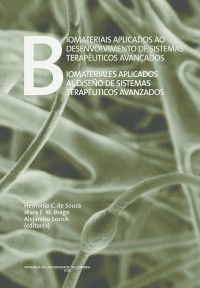Please use this identifier to cite or link to this item:
https://hdl.handle.net/10316.2/36870| Title: | Ingeniería de tejidos: sustitutos artificiales para uso en piel y mucosa oral. | Other Titles: | Tissue Engineering: artificial substitutes for skin and oral mucosa. | Authors: | Fontanilla, Marta R. Suesca, Edward Casadiegos, Sergio |
Keywords: | Tissue substitutes;Artificial tissue;Skin substitutes;Oral mucosa substitutes;Tissue engineering;Regenerative medicine;Sustitutos de tejido;Tejido artificial;Sustitutos de piel;Sustitutos de mucosa oral;Ingeniería de tejidos;Medicina regenerativa | Issue Date: | 2015 | Publisher: | Imprensa da Universidade de Coimbra | Journal: | http://hdl.handle.net/10316.2/36860 | Abstract: | Research in developing artificial tissue has emerged during the two last decades around the world. In the same manner that surgical grafting of natural tissue, artificial tissue grafting aims to promote the replacement of lost tissue by one that has similar morphology and function. Artificial tissue does not completely prevent fibrotic scarring and wound contracture. However, in many cases its use has proved to result in better healing. Currently, in the Latin America region the advantages and disadvantages of skin and oral wound therapies based on grafting artificial tissue are only known by a reduced group of scientists working in the field and by the few clinicians willing to use them. For that reason, it is important to inform on skin and oral mucosa tissue engineered products and the advantages and disadvantages of applying them. This chapter surveys the origin of artificial tissue manufacturing, some biological bases of tissue engineering, skin and oral mucosa tissue substitutes approved for human use, and their clinical application. En el mundo la investigación y desarrollo de tejido artificial ha crecido rápidamente en las dos últimas décadas. Al igual que el injerto de tejido natural, el objetivo del injerto de tejido artificial es promover la formación de tejido morfológica y funcionalmente similar al perdido. Aunque el uso de tejidos artificiales no evita totalmente la cicatrización fibrótica y la contractura, en muchos casos su aplicación ha contribuido a mejorar los resultados del cierre de heridas de piel o mucosa oral. En los países Latinoamericanos las ventajas y desventajas del tratamiento de heridas de piel y de mucosa oral con tejidos artificiales son conocidas solamente por el grupo reducido de científicos que investigan en el tema y por los pocos clínicos interesados en su aplicación. Por esta razón, es importante divulgar los principios básicos de la ingeniería de tejidos, los sustitutos de piel y mucosa oral producidos con ésta tecnología así como los beneficios y perjuicios de su aplicación clínica. Éste capítulo revisa el origen de los tejidos artificiales, algunos fundamentos biológicos de la ingeniería de tejidos, sustitutos de piel y mucosa oral aprobados para uso humano y las indicaciones de su aplicación clínica. |
URI: | https://hdl.handle.net/10316.2/36870 | ISBN: | 978-989-26-0880-8 978-989-26-0881-5 (PDF) |
DOI: | 10.14195/978-989-26-0881-5_6 | Rights: | open access |
| Appears in Collections: | Biomateriais aplicados ao desenvolvimento de sistemas terapêuticos avançados |
Files in This Item:
| File | Description | Size | Format | |
|---|---|---|---|---|
| cap_tulo_6_-_ingenier_a_de_tejidos_sustitutos_artificiales_para_uso_en_piel_y_mucosa_oral.pdf | 1.7 MB | Adobe PDF |  |
Items in DSpace are protected by copyright, with all rights reserved, unless otherwise indicated.
